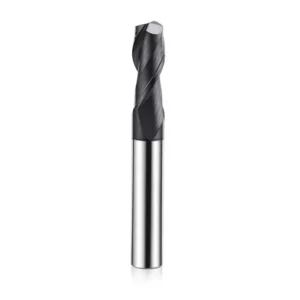When it comes to milling cast iron, finding the right tool can make all the difference in achieving precise cuts and maximizing efficiency. One such tool that is widely used in this application is the 2 flutes end mill for cast iron. With its unique design and functionality, this end mill has proven to be a valuable asset for professionals in the industry. In this article, we will guide you through the process of choosing the best 2 flutes end mill for cast iron, highlighting its advantages and application areas that customers are interested in.
1. Consider the Material:
Before diving into the details of the end mill, it is crucial to understand the material you will be working with. Cast iron is known for its hardness and brittleness, making it challenging to machine. However, with the right end mill, you can overcome these obstacles and achieve exceptional results. Look for an end mill specifically designed for cast iron to ensure optimal performance.
2. Flute Count:
The number of flutes in an end mill plays a vital role in its performance. In the case of cast iron milling, a 2 flutes end mill is highly recommended. This flute count provides a perfect balance between chip evacuation and tool rigidity. With two flutes, the end mill can efficiently remove chips from the cutting area while maintaining stability, resulting in smoother cuts and extended tool life.
3. Coating Options:
Coatings on end mills enhance their performance and durability, especially when working with tough materials like cast iron. Look for end mills with coatings such as TiAlN or TiCN, as they offer excellent heat resistance, increased lubricity, and improve tool life. These coatings prevent premature wear and help combat the extreme conditions encountered during cast iron milling.
For instance, when using a 2 flutes end mill with a TiAlN coating, the tool’s lifespan is significantly extended. This allows operators to complete more tasks without the need for frequent tool changes, ultimately increasing productivity and reducing costs.
4. Shank Size:
The shank size of the end mill is another critical factor to consider. Ensure that the shank diameter matches the specifications of your machine’s collet or tool holder. A secure and precise fit between the end mill and the tool holder is essential to minimize tool runout and maximize cutting performance. Always refer to the manufacturer’s guidelines to select the appropriate shank size.
5. Application Areas:
The versatility of the 2 flutes end mill for cast iron makes it suitable for various application areas. From general milling operations to specific machining tasks, this tool can handle it all. Whether you are working on automotive parts, molds, or any other cast iron components, using a 2 flutes end mill ensures exceptional surface finishes and tight tolerances. Its efficient chip evacuation also reduces the risk of chip buildup and helps maintain the overall quality of the machined parts.
In conclusion, choosing the best 2 flutes end mill for cast iron requires careful consideration of factors such as material, flute count, coating options, and shank size. By selecting a tool specifically designed for cast iron, you can achieve precise cuts while maximizing tool life and productivity. Remember to always refer to manufacturer’s guidelines and consult with experts to ensure the best results. So, equip yourself with the right tool, and let your cast iron milling projects reach new heights of success!

